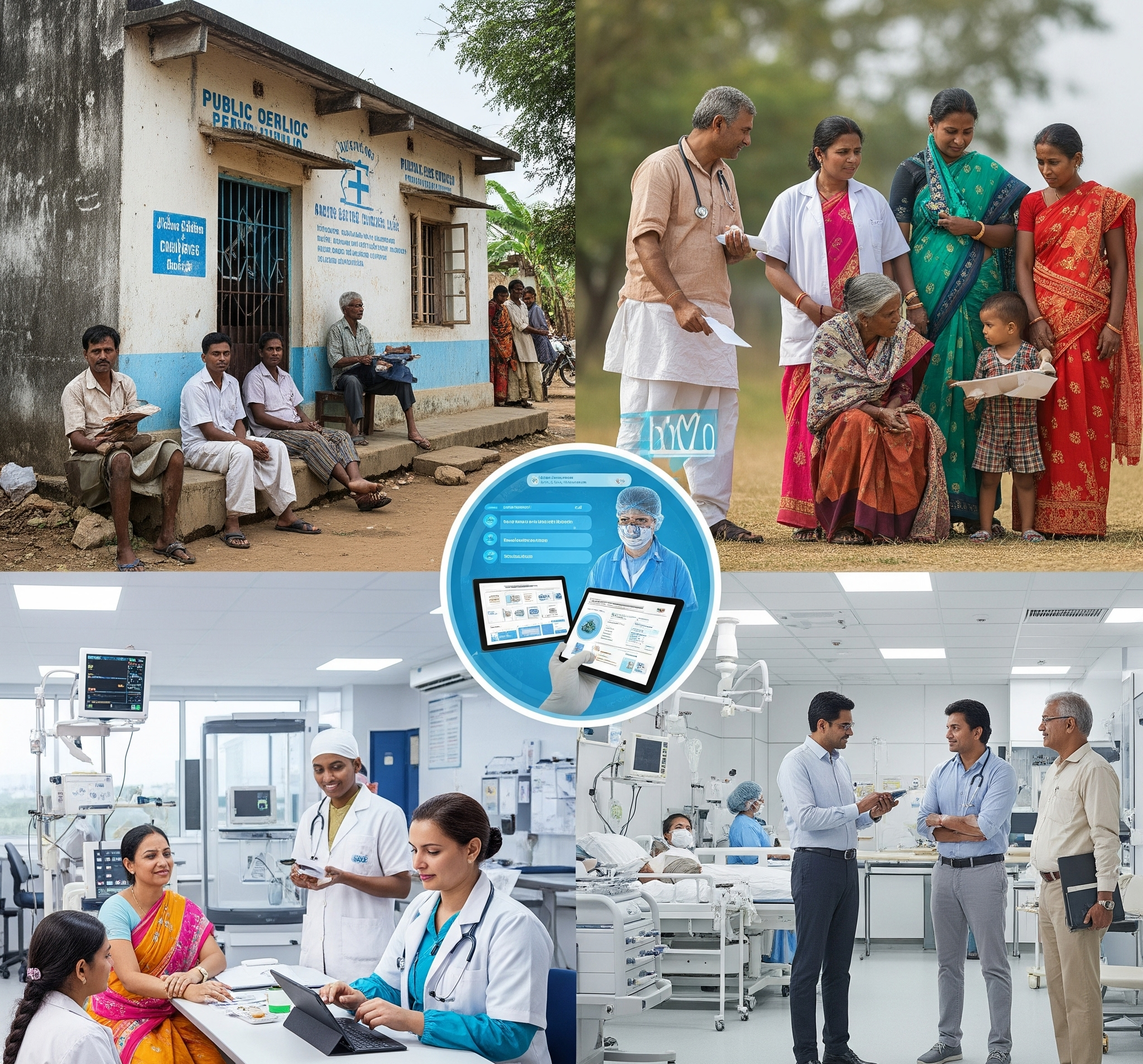Bridging the Gaps: A Critical Analysis of India’s Public Health Policies & Reforms.
Government might have started many schemes but despite of all of these there are certain short-comings also like the proper execution of policies, general awareness, digital education, ground-level monitoring, staff recruitments, infrastructure, timely follow-ups, strict regulations over big fat MNCs, marketing norms, quality checkups, etc.
- Standardization of Labelling and Definitions:
● Strict monitoring of misleading claims targeting children and adolescents, labelling standards, clearcut UPF definitions, higher taxation on vigorously marketed UPFs to reduce consumption, promoting education about sugars and fats through camping in rural areas and schools indicating health risks like diabetes, obesity, cardiovascular diseases etc.
● Adopt Nutrient Profile Model (NPM) like Brazil, France, Mexico, Israel, Peru, Chile, UK etc. for labelling and marketing restrictions. NPM is a rating in which a food item is rated as per its nutritional value which enables end users to identify that this food item is appropriate or not, or to find a better healthy option.
● A specialized taxation was levied on saturated fatty acids foods in Denmark in 2011. On the other hand, Mexico surcharged sugary beverages and junk food to discourage their consumption. - Rural-Urban Variance:
● Most healthcare infrastructure development and professionals are based in urban areas leaving rural areas underserved and limited to only schemes not infrastructure and super-speciality facilities for early diagnosis and interventions.
● At present, more than 65% of hospital beds are in urban areas whereas over 60% of Indian population lives in rural areas. This potential difference can be curbed through Public-Private Partnerships (PPP) where government can provide land and financial support, while private organisations can be used for functional proficiency, technological innovations and maintenance specially in Tier II and Tier III cities.
● This PPP model can enhance time consumption which is major concern in overwhelming public systems which will generate employment and boost local economy. The synergistic approach in Public and Private entities can bring revolution in rural healthcare system. - Affordability in Healthcare:
● Although India has cheaper in healthcare when compared to US like countries but despite of this for Indian population it is still expensive. This affordability issue is a major concern in Indian population which is formed by majority of middle-class and BPL population.
● Introduction of schemes like PM-JAY helped many but still out-of-pocket expenditure (OOPE) is still a heavy burden on millions. For instance, OOPE for FY23 was 47.1% which is quite a challenge despite of having schemes like PM-JAY. This might have been because of delayed and heavy burden in government hospitals many can’t wait to get timely and good services so they consult in private hospitals for better quality consultations.
● From time to time almost every government hospital goes under infrastructure development but still due to over-crowded population and limited workforce the resources are left unutilised or are overexploited. - Implementation, Awareness and Utilization:
● Ayushman Bharat is a centrally sponsored scheme which should be adopted by each state but since the launch of AB a variation is seen in adoption. For instance, Delhi, Odisha didn’t adopt AB but after change in government they officially endorsed it, while West Bengal and Telangana still left out in the whole nation. Political disagreements among state and centre are faced by its population. Governments need to understand their state’s position and needs. Some private hospitals empanelled with PM-JAY complained about timely payments, denial rates, etc. due to which other non-empanelled hospitals rethink to adopt such schemes.
● There are so many schemes yet a low consciousness among the legitimate beneficiaries in rural areas. They don’t know how to apply, avail and limitations of the schemes. Digital education is also important for the use of portals like e-Sanjivani where free at-home consultations are provided throughout the country. This lack of information, tedious procedures, and underutilization should be acknowledged by government. Solution for this can be education of such schemes through camps in PHCs, schools and panchayat samitis etc. - Healthcare Workforce:
● Despite development of infrastructure, recruitment of manpower is also important. It is estimated that by 2030 there will be shortage of doctors, nurses, and midwives by a massive amount of 1.8 million. This amount of shortage in almost 5 years is an alarming concern for India which covers almost 1/5th of World’s population.
● Increasing in number of seats in medical and nursing colleges should be first step that too with skilled professionals. Timely recruitments in PHCs, rural hospitals, district hospitals, etc. It is seen that vacancies are released during the time of elections which shows the government’s stance on healthcare. - Pharma manufacturing:
● India is Pharmacy of the World because of it supplies 20% of total generic medicines, more than 60% of global vaccines, has outreach to over 200 countries, low manufacturing costs, robust R&D, and one of the largest manufacturers of Active Pharmaceutical Ingredients (APIs), global certifications like US-FDA. India’s pharmaceutical industry is about $58 billion, which will reach $120-130 billion by 2030 and $400-450 billion by 2047. PLI scheme is a breakthrough in pharma industry to represent India at global level.
● This generic manufacturing should be upscaled to global innovation through regulatory and intellectual property reforms, faster patent clearances, along with global regulations like US-FDA, EMA. India should hold on to its reputation in generic medicines through strict quality checks and should not compromise under the name of affordability.
● To become Innovator of the World, its high time to nurture the talent and research in biotech, med-tech and diagnostics through multi-disciplinary approach which is possible by not losing top-end brains to abroad. Research infrastructure, domestic incentives, grants, appropriate resources should be given timely to ensure retention of this talent.
All above reforms suggested can not be just imposed on policymakers and government. India’s development should be a shared mission of each and every citizen. Private institutions, startups, society should come together along with the government to collectively create a robust system which is approachable, economical, and ambitious. Along with the right system and mindset Bharat has not only potential but responsibility of Global healthcare.




